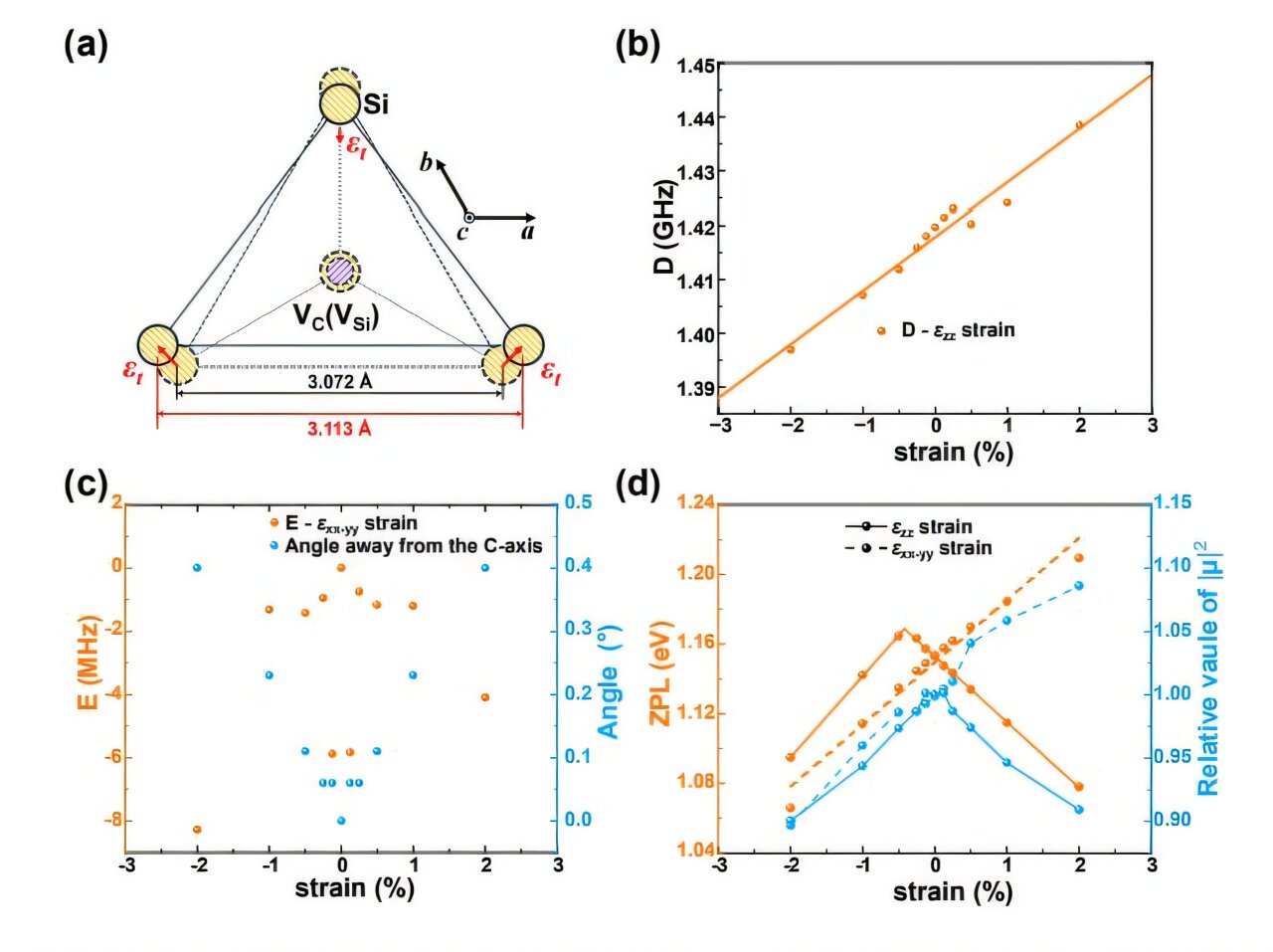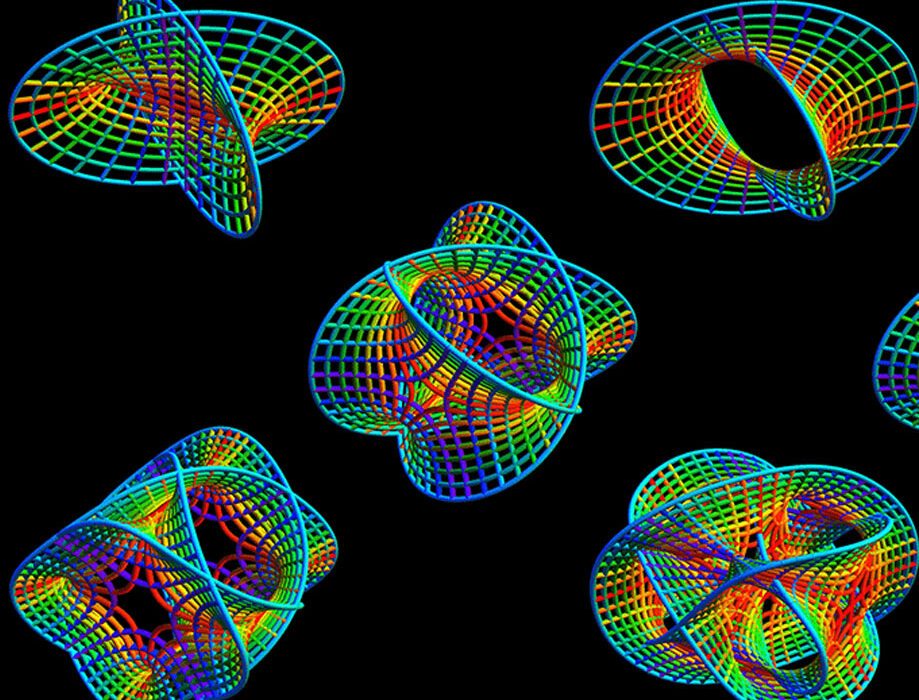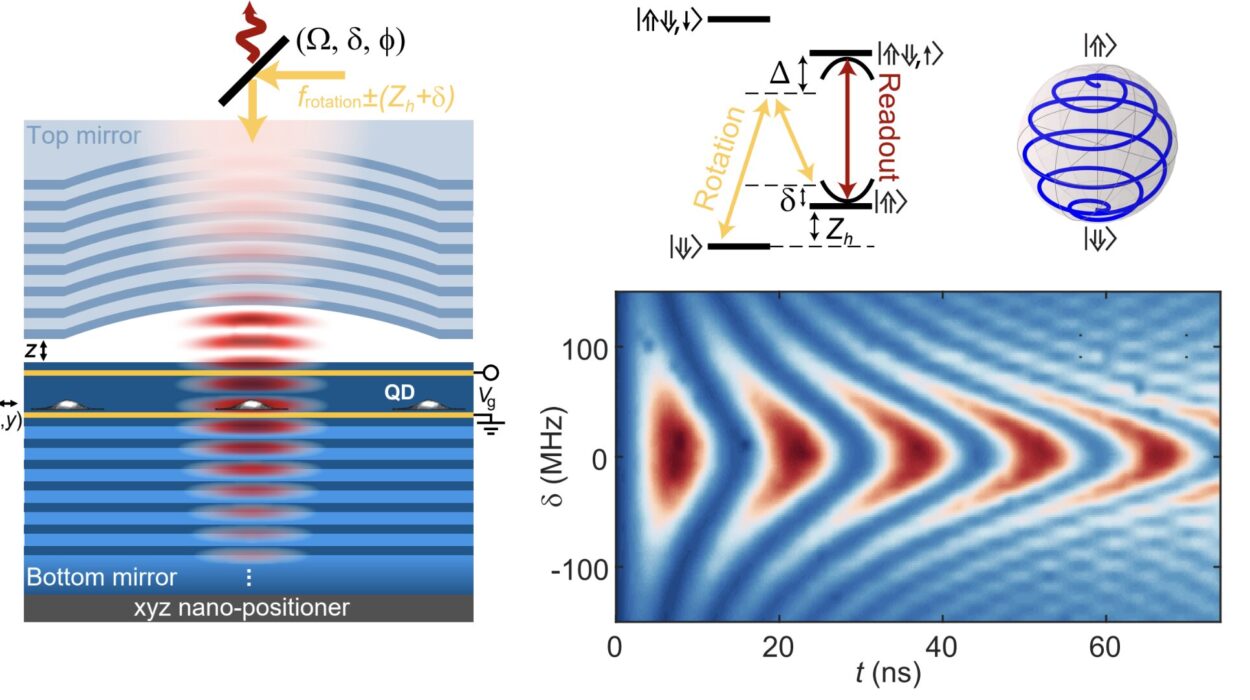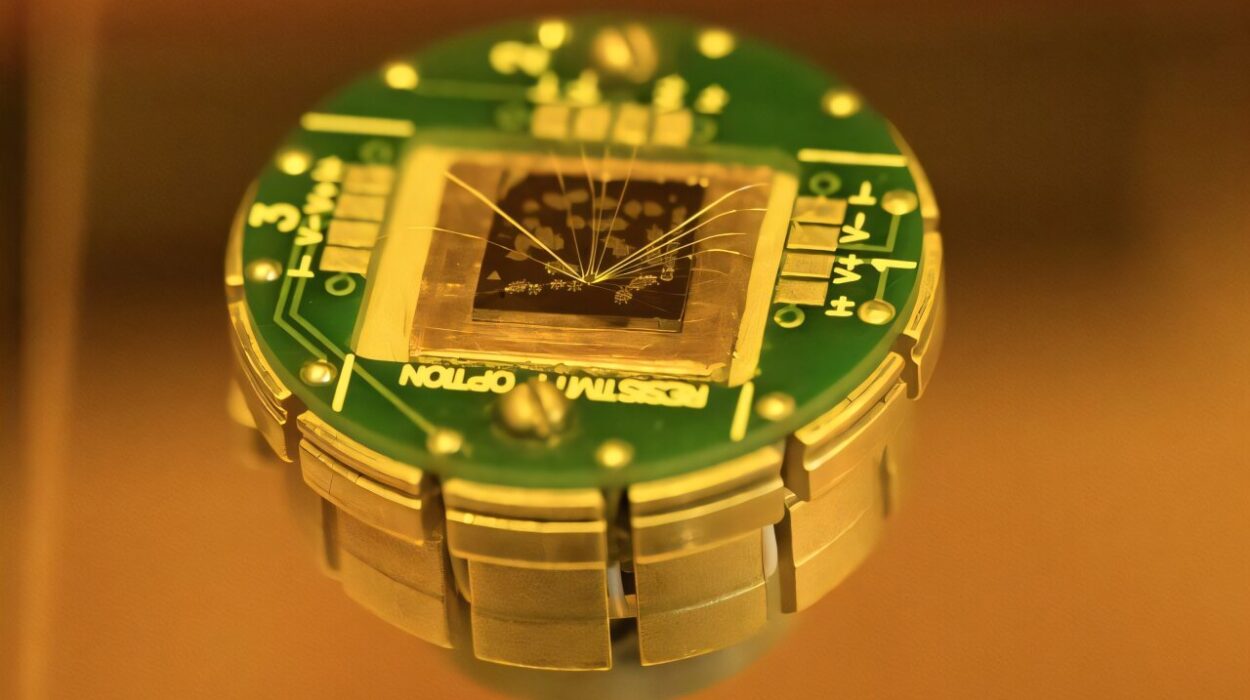At first glance, a crystal appears to be the embodiment of perfection — a flawless lattice of atoms, repeating with mathematical precision. But within that symmetry, tiny imperfections hide. These microscopic irregularities, known as quantum defects, are not flaws to be eliminated; they are, in fact, among the most fascinating and promising tools in modern physics.
Quantum defects can trap individual electrons and preserve their quantum properties — particularly their spin, a quantum version of angular momentum that acts like a tiny magnetic compass inside the electron. These trapped spins can be manipulated and read, making quantum defects essential for emerging technologies such as quantum computers, quantum communication networks, and quantum sensors that can detect magnetic or electric fields at atomic precision.
However, one of the greatest challenges in harnessing these quantum systems lies in their fragility. The quantum world is notoriously delicate: a small fluctuation in temperature, a vibration, or a structural inconsistency can disrupt the delicate state of an electron’s spin. To build reliable quantum devices, scientists need not only to detect these spins accurately but to distinguish their quantum states with absolute clarity.
This clarity — known as spin readout contrast — is a key metric for quantum technologies. The higher the contrast, the easier it is to tell one spin state from another, much like sharpening the focus of a camera to see two objects distinctly rather than as a blur.
The Quest for Clearer Quantum Signals
For years, researchers have been trying to enhance spin readout contrast in solid-state systems such as diamond nitrogen-vacancy centers and silicon carbide defects, which serve as quantum information carriers. These systems are attractive because they can function at room temperature, making them practical for real-world applications.
Yet, even the most advanced methods often struggle with low contrast, leading to errors in quantum measurements and inefficiencies in devices. Improving that signal clarity — without cooling the system to near absolute zero — has become one of the grand challenges in the field.
Recently, a team of physicists and engineers from the Harbin Institute of Technology (Shenzhen), the HUN-REN Wigner Research Center for Physics in Hungary, and the Shanghai Institute of Microsystem and Information Technology at the Chinese Academy of Sciences may have found a powerful solution. Their approach does not involve exotic materials or ultra-cold temperatures, but something much simpler: stretching or compressing the crystal itself.
This technique, known as strain engineering, involves applying mechanical stress to a material to subtly alter its internal atomic structure. What the researchers discovered is that by precisely controlling this strain, they could tune the behavior of quantum defects — and dramatically enhance their spin readout contrast.
The Science of Strain: Bending the Quantum World
The research, published in Physical Review Letters, began with a theoretical framework developed by Professor Adam Gali and his team at the HUN-REN Wigner Research Center. They sought to describe how a material’s electronic structure — specifically, how electrons occupy energy levels — affects spin readout contrast in high-spin quantum defects.
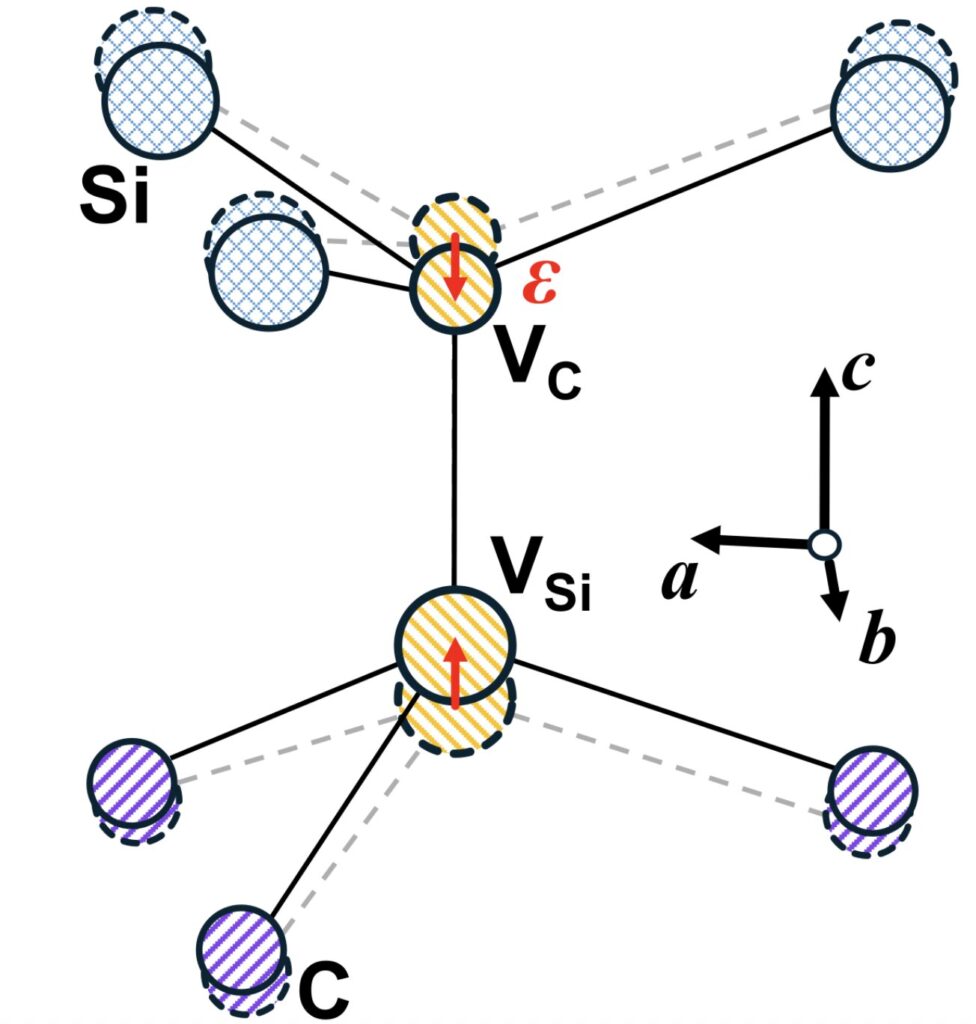
Using advanced quantum mechanical simulations and ab initio (first-principles) wave functions, Gali’s team modeled how applying strain could modify these energy levels. Their hypothesis was elegant: if strain changes the distances and interactions between atoms, it could also influence how spins behave and how clearly they can be read.
Their results were striking. The simulations showed that specific strain fields could significantly amplify the spin readout contrast — essentially sharpening the quantum “picture.”
To test this idea in the real world, Professor Qinghai Song and his experimental team at Harbin Institute of Technology took over. They used silicon carbide (SiC) membranes — a robust, semiconducting material already popular in quantum research — and measured how different levels of natural strain within the membranes affected the spin properties of individual quantum defects.
The outcome confirmed the theory beautifully. Song’s team observed a substantial enhancement in spin readout contrast, achieving more than 60% contrast at room temperature — a remarkable feat for a solid-state quantum system.
The Breakthrough: Precision Through Pressure
This achievement is far more than a laboratory curiosity. It represents a new control mechanism for quantum technologies — one that is both powerful and practical. Unlike methods requiring extreme cooling or complex magnetic fields, strain engineering uses mechanical deformation that can be applied and tuned with existing microfabrication techniques.
By bending or stretching a crystal just slightly, scientists can control the quantum properties of its defects with remarkable precision. It’s like tuning a musical instrument — each degree of strain changes the “note” of the quantum spin, bringing it into harmony for clearer, more reliable performance.
In quantum sensing, this improved contrast means greater sensitivity to minute changes in magnetic or electric fields — a key requirement for detecting biological molecules, mapping neural activity, or monitoring nanoscale materials. For quantum computing, it means fewer readout errors, improving the stability and scalability of quantum bits (qubits).
In essence, strain engineering offers a new dimension of control over the quantum world — literally and figuratively.
From Imperfection to Innovation
One of the most poetic aspects of this discovery is that it turns imperfection into innovation. Quantum defects — once viewed as flaws in a crystal’s perfect symmetry — are now among the most valuable features in materials science. They are the gateways to quantum information, and now, thanks to strain engineering, scientists can fine-tune these gateways to perform with unprecedented accuracy.
This paradigm shift echoes a recurring theme in science: progress often arises not from eliminating flaws, but from learning to understand and control them. Just as a violin’s resonance depends on tension in its strings, the quantum resonance of a defect can be optimized through strain — a delicate balance between pressure and precision.
The Global Collaboration Behind the Discovery
The collaboration between institutions in China and Hungary highlights the international nature of modern quantum research. Theoretical physicists and experimentalists worked hand in hand — one team predicting and modeling quantum behavior at the atomic scale, the other testing those predictions with cutting-edge laboratory techniques.
This interplay between theory and experiment is the heartbeat of scientific advancement. The ability to verify a prediction as subtle as strain-induced spin control is a testament to both the precision of modern simulation methods and the sophistication of today’s quantum measurement technologies.
The study also underscores how the quantum sciences have evolved into a multidisciplinary frontier. Materials science, condensed matter physics, and quantum information theory now intersect seamlessly, each providing tools and insights that empower the other.
Opening the Door to Quantum Biosensing
Beyond computation and communication, one of the most exciting potential applications of this research lies in quantum biosensing. These sensors, which rely on quantum defects to detect faint magnetic or electric fields, could revolutionize how we study biological systems.
Imagine a sensor capable of detecting the magnetic field of a single neuron firing, or identifying individual biomolecules in real time. With enhanced spin readout contrast, such sensors could achieve levels of sensitivity previously thought impossible — all without requiring ultra-cold or high-vacuum environments.
This could lead to quantum-enabled medical diagnostics, capable of identifying diseases at their earliest molecular signatures, or mapping brain activity with atomic-level precision. In this sense, the discovery does not just advance quantum physics; it brings the quantum world closer to human life.
The Road Ahead: Precision, Control, and Discovery
The work by Gali, Song, and their colleagues is not the final word — it’s the opening of a new chapter. The teams plan to refine their methods for precise strain control, using nanofabrication and mechanical actuation to shape strain fields with unprecedented accuracy. They also intend to study other types of quantum defect systems, including those in diamond and two-dimensional materials like hexagonal boron nitride, to see how strain affects their quantum behavior.
In the future, these strained materials could be integrated into quantum circuits, forming the building blocks of scalable, room-temperature quantum technologies. The ability to “tune” quantum behavior through something as tangible as mechanical strain could redefine how we design and optimize quantum devices.
As Professor Song put it, the ultimate goal is to “achieve a more accurate characterization of the underlying physics of strain-spin interactions.” In other words, the team seeks to turn this empirical success into a deeper theoretical understanding — one that could guide the design of the next generation of quantum materials.
The Beauty of a Controlled Imperfection
There is something profoundly beautiful about the idea that the future of quantum technology rests on the precise control of imperfections. Each quantum defect, invisible to the naked eye, becomes a window into the mysteries of reality — a place where matter, energy, and information converge.
Through strain engineering, scientists have learned to speak the language of these defects, coaxing them into revealing their secrets. It is a reminder that even in the rigid order of a crystal, there is room for creativity — that perfection is not the absence of flaws, but the mastery of them.
The discovery from Harbin, Wigner, and Shanghai is more than a scientific milestone; it is a metaphor for progress itself. By learning to bend the rigid structures of nature — gently, intelligently, purposefully — humanity continues to expand the boundaries of what is possible.
In the quantum world, where reality itself vibrates between possibilities, a little strain can reveal the universe’s deepest harmonies. And perhaps, as we continue to stretch our understanding of the world, we too are being shaped — refined by curiosity, tension, and the pursuit of knowledge — into something clearer, more precise, and profoundly alive.
More information: Haibo Hu et al, Strain-Enhanced Spin Readout Contrast in Silicon Carbide Membranes, Physical Review Letters (2025). DOI: 10.1103/tdb3-tqfv. On arXiv: DOI: 10.48550/arxiv.2506.00345
